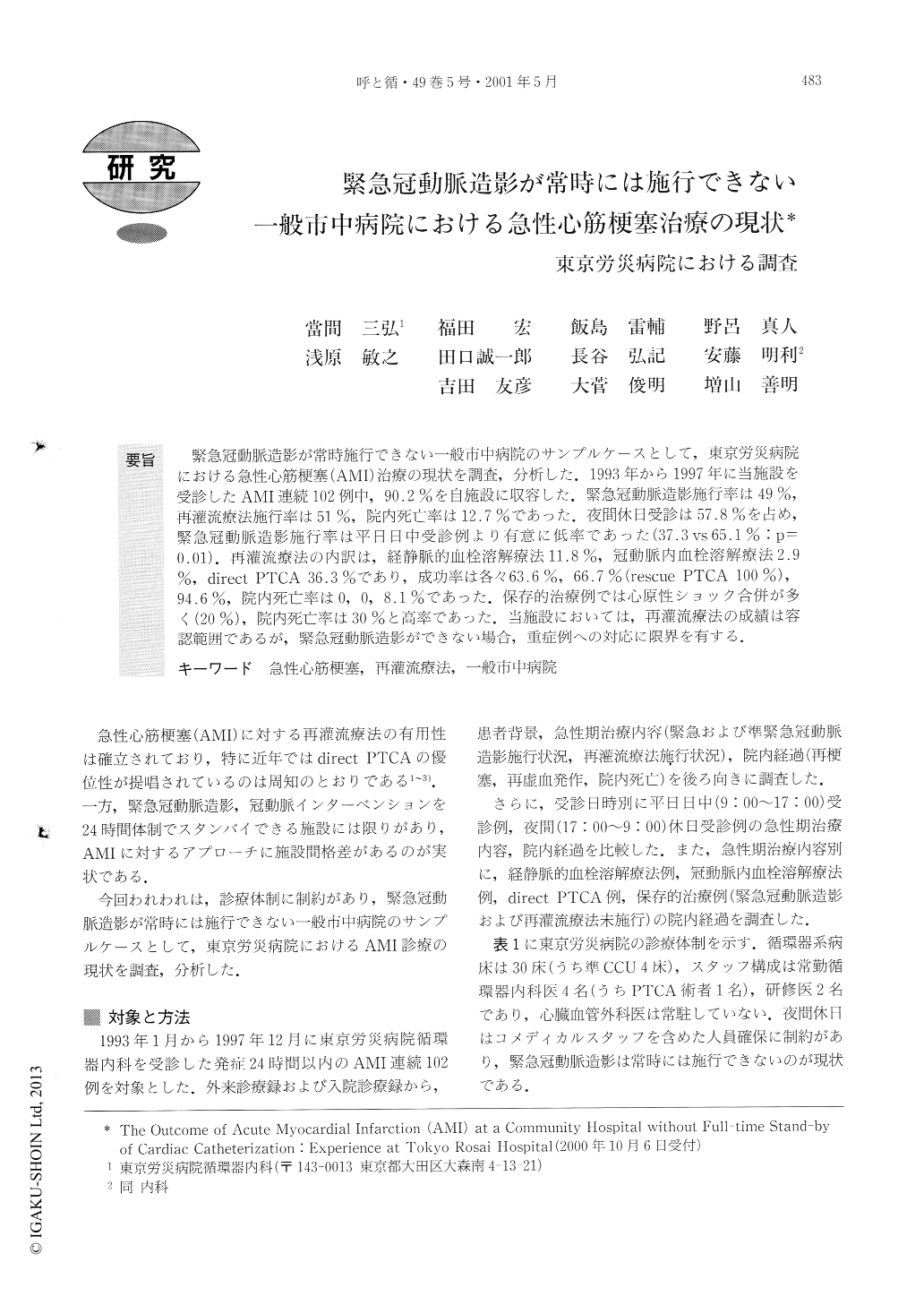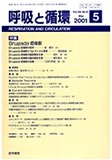Japanese
English
- 有料閲覧
- Abstract 文献概要
- 1ページ目 Look Inside
要旨 緊急冠動脈造影が常時施行できない一般市中病院のサンプルケースとして,東京労災病院における急性心筋梗塞(AMI)治療の現状を調査,分析した.1993年から1997年に当施設を受診したAMI連続102例中,90.2%を自施設に収容した.緊急冠動脈造影施行率は49%,再灌流療法施行率は51%,院内死亡率は12.7%であった.夜間休日受診は57.8%を占め,緊急冠動脈造影施行率は平日日中受診例より有意に低率であった(37.3vs 65.1%:p=0.01).再灌流療法の内訳は,経静脈的血栓溶解療法11.8%,冠動脈内血栓溶解療法2.9%,direct PTCA 36.3%であり,成功率は各々63.6%,66.7%(rescue PTCA 100%),94.6%,院内死亡率は0,0,8.1%であった.保存的治療例では心原性ショック合併が多く(20%),院内死亡率は30%と高率であつた.当施設においては,再灌流療法の成績は容認範囲であるが,緊急冠動脈造影ができない場合,重症例への対応に限界を有する.
We investigated the outcome of acute myocardialinfarction (AMI) at the Tokyo Rosai Hospital, as atypical community hospital where cardiac catheterization can not be always carried out.
Of 102 Consecutive cases diagnosed as AMI, 92patients (90.2%) were admitted to this hospital fromJanuary 1993 to December, 1997.
The percentiles of those who received an emergencycardiac catheterization and/or reperfusion therapy were49% and 51% respectively. The mortality rate duringthis period among the entire study population was 12.7%.
The number of patients who were admitted during offconsultation hours was 57.8 %of the tord. Among them,37.3% underwent emergency cardiac catheterization,whereas many more patients (65.1%) who werehospitalized during consultation hours received it (p=0.01).
Reperfusion therapy comprised intravenous thrombolisis (IVT : 11.8 %), intracoronary thrombolisis (ICT: 2.9%) and primary PTCA (36.3%) . The reperfusion success rates were 63.6% for IVT, 66.7% for ICT(100% for ICT +rescue PTCA) and 94.6% for primaryPTCA, respectively. The in-hospital mortality rateswere 0% for IVT and ICT, 8.1% for primary PTCA. Inpatients who underwent medical therapy, cardiogenicshock was observed in 20 %, and their in-hospitalmortality rate was significantly higher (30%) thanother individuals.
In conclusion, reperfusion therapy for the treatmentof AMI can be carried out safely and effectively in ourhospital. However, if an emergency cardiac catheterization can not be performed, we have limitations in treating high risk patients with AMI.

Copyright © 2001, Igaku-Shoin Ltd. All rights reserved.


